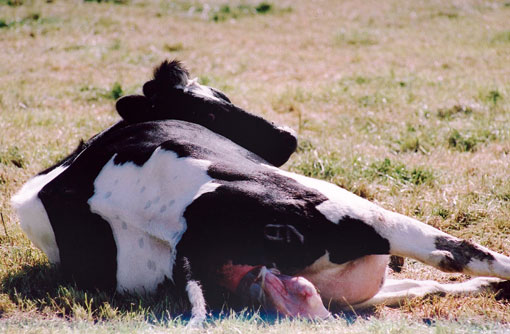Take care of cows during the dry period

The dry period and particularly the transition period (typically defined as three weeks pre- to three weeks post-calving) is one of the most important phases of the production cycle for the modern dairy cow.
These periods influence the production and fertility in the forthcoming lactation, periparturient diseases and both existing and future mammary infections.
The following four points are some of the key considerations during the dry period:
1. Appropriate ration and intake
Over-feeding during the early dry period (typically 60-20 days pre-calving) has been associated with poor dry matter intakes (DMI), increased risk of fat mobilisation, increased risk of metabolic disease and poor reproductive and productive performance during early lactation. This typically means you should be aiming to provide rations with energy densities of about 90MJ ME/day. Conversely, under-feeding through this period can be equally dangerous.
DMI naturally declines in the final two weeks of the dry period, therefore you should aim to maximise DMI by ensuring ration palatability and availability while increasing the energy intake to about 110-120MJ ME/day.
Body condition scores (BCS) should be about 2.75-3.0 at drying off and should be monitored for loss throughout the dry period.
2. Mammary health
The dry period is a critical time for curing existing mammary infections while preventing the development of new ones. Up to one-third of existing mammary infections will self-cure during the dry period and with appropriate dry cow therapy the number of infections curing is likely to be closer to 80-90%.
However, the dry period is high risk for the contraction of new infections (this is why it may appear that infections may not be curing, when in fact they are, it’s just that new infections are acquired). In addition, 20% of teats fail to form a functional seal during the first 30 days of the dry period. Given that 90% of new infections occur in teats without functional seals, this makes good dry cow hygiene and management, together with internal teat sealants, essential.
3. Periparturient disease
Both insufficient energy and low calcium levels are called gateway diseases and are strongly correlated to retained foetal membranes (RFM), metritis, displaced abomasums and mastitis.
Both clinical (milk fever) and subclinical hypocalcaemia are completely controllable through the manipulation of the dietary cation-anion difference (DCAD). However, a complete DCAD system is not appropriate for a large number of farms due to the need to make a separate mix for the pre-calving transition cows – using a partial DCAD through the active selection and feeding of low DCAD forages can be more appropriate (although it is not likely to completely remove the risk of subclinical hypocalcaemia). Other strategies to control milk fever are available and complete control of hypocalcaemia is achievable – you should discuss your management programme with your vet.
4. Lameness
The dry period represents a risk period for both infectious (eg digital dermatitis) and non-infectious claw horn (for example, sole ulcers) causes of lameness.
Dry cows can act as a reservoir for digital dermatitis which, despite not immediately resulting in lameness, can prevent you from achieving complete control of digital dermatitis. Footbathing dry cows in herds which are struggling to control digital dermatitis should be considered.
Sole ulcers are the most common lameness-causing lesion in UK dairy cows and one of the most significant risk factors is loss of condition in early lactation (and the resulting loss/change in digital fat pad). This reduces the shock-absorbing/cushioning effect which, together with reduced attachment of the bones in the foot to the hoof capsule, predisposes the animal to the bones sinking and pinching the sole at the typical sole ulcer site.
Providing appropriate energy-density ration, while maximising DMI and monitoring BCS loss through both the dry period and post-calving transition period can help reduce the development of sole ulcers.
Jim Willshire, Endell Veterinary Group
